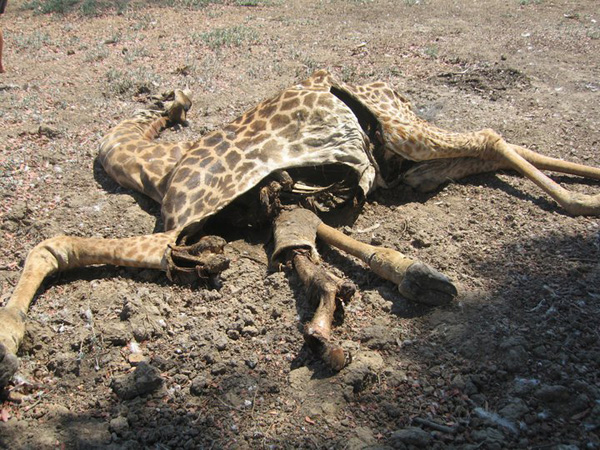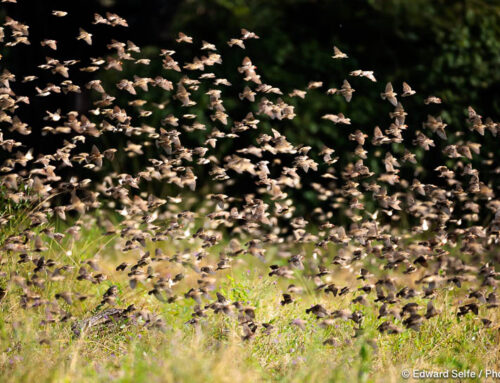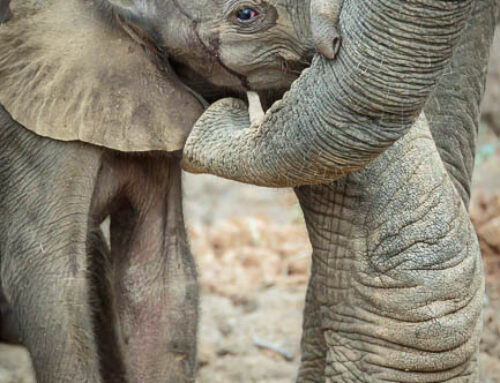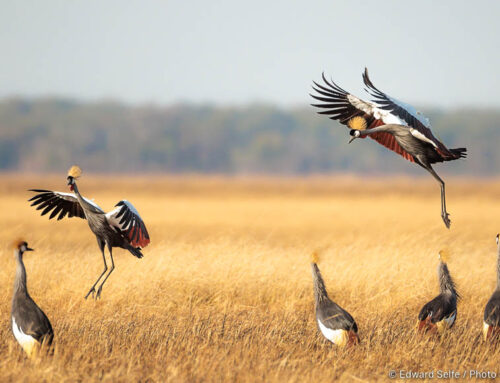Recently we found a dead giraffe behind the camp. When we found her, she was still warm and there was no obvious cause of death. We discussed the various possibilities but could only conclude that she must have been killed by an acute injury because she was in good condition and showed no sign of sickness.

During the first night, hyaenas came and opened up the belly and began feeding on the carcass. The following day, vultures arrived, and at one point, all four species of vultures from this area were feeding on the carcass. At the feast, there were a few Hooded, White-headed and Lappet-faced Vultures, but the vast majority were White-backed Vultures (well over 100 of them!). Due to their size, the Lappet-faced Vultures were able to keep the others at bay while they fed, but once they had eaten their fill, the battle for the tastiest bits between two of the smaller species ensued. The smallest species, the Hooded Vultures, had to wait their turn on the margins of the melee.



I went to have a look at the carcass one evening a couple of days later to see whether there were any clues now that the body had been opened up. Internally, everything seemed normal, although I am far from an expert on Giraffe physiology! The following day, fewer Vultures came to feed; the remaining birds were mostly Hooded Vultures which have thinner bills, allowing them to access flesh that is out of reach of the heaver bills of the other species.
Four days after the giraffe died, the vultures had almost finished feeding and only a couple remained at the site. The rest of the giraffe herd, which hadn’t come anywhere near the carcass, began to approach, and stood nearby, staring at the body. The last few vultures continued squabbling over the desiccated remains and the giraffes made no attempts to chase them off. They didn’t approach closer than 10m to the carcass, but appeared to be observing the situation intently.

When it began to get dark, they left the scene, one-by-one or in pairs, at their own pace.
Elephants famously show behaviour that resembles mourning, but I’ve not heard that giraffes act in the same way. I think that they were just interested in the scene, and they certainly showed no distress or aggression. While taking photos, I was within 30m of the carcass, and they simply watched me as I walked slowly around, but were not concerned by my presence.
The giraffe repeated this behaviour the following day and for a third day after that. But, now they seem to have lost interest and have returned to browsing leaves and creepers in the shrubs around the dambo.
PS – I found a research paper on giraffe in Kenya containing an anecdote, similar to the story above, where adult giraffe repeatedly came close to the carcass of a dead calf and occasionally nudged it to see if it would respond. But they also noted that “despite the large amount of evidence for such behaviour in elephants, this exploratory or investigatory behaviour of dead conspecifics and apparent ‘protective’ behaviour of the carcass has seldom been recorded in other mammal species and certainly not in giraffe.”
Seems that we have observed something unusual here. The carcass is still out in the dambo, but there are no vultures anymore. I suggest that the very dry weather and lack of water means that there are plenty of other carcasses in the surrounding area so the scavengers needn’t pick at scraps when there is so much else on offer.



